I think it’s clear that my favorite thing about being in the Florida Keys is the amount of time we get to spend in and on the water, and reef-safe sunblock is a part of that. The sun exposure in the Keys can be intense and it’s important to protect yourself and your family from sunburns… but at what cost? Do you ever wonder why you have to reapply sunscreen when you’ve been swimming or snorkeling?
The ocean, covering more than 70% of our planet, is not only a source of breathtaking beauty but also a vital part of Earth’s ecosystem. Coral reefs, often referred to as the “rainforests of the sea,” are home to about 25% of all marine species. However, these underwater ecosystems are under threat, and one lesser-known culprit is sunscreen. As millions of people enjoy the ocean around Florida each year, the chemicals in traditional sunscreens wash off and can have devastating effects on our coral reefs. Today I’m sharing why reef-safe sunblock is essential, the harm caused by conventional sunscreen, and how to make informed choices to protect marine life. If you have any questions or want to share your top picks for reef-safe sunscreen please leave a comment or send us a note!
NOTE: sunscreens containing certain reef-damaging chemicals (we’ll talk about it below) are no longer sold anywhere in Hawaii but they are still sold and fully allowed in Florida. Both the Big Island and Maui (including Molokai and Lanai) have laws in place preventing the use of reef-damaging sunblock. I’d love to see laws like this here in Florida too.
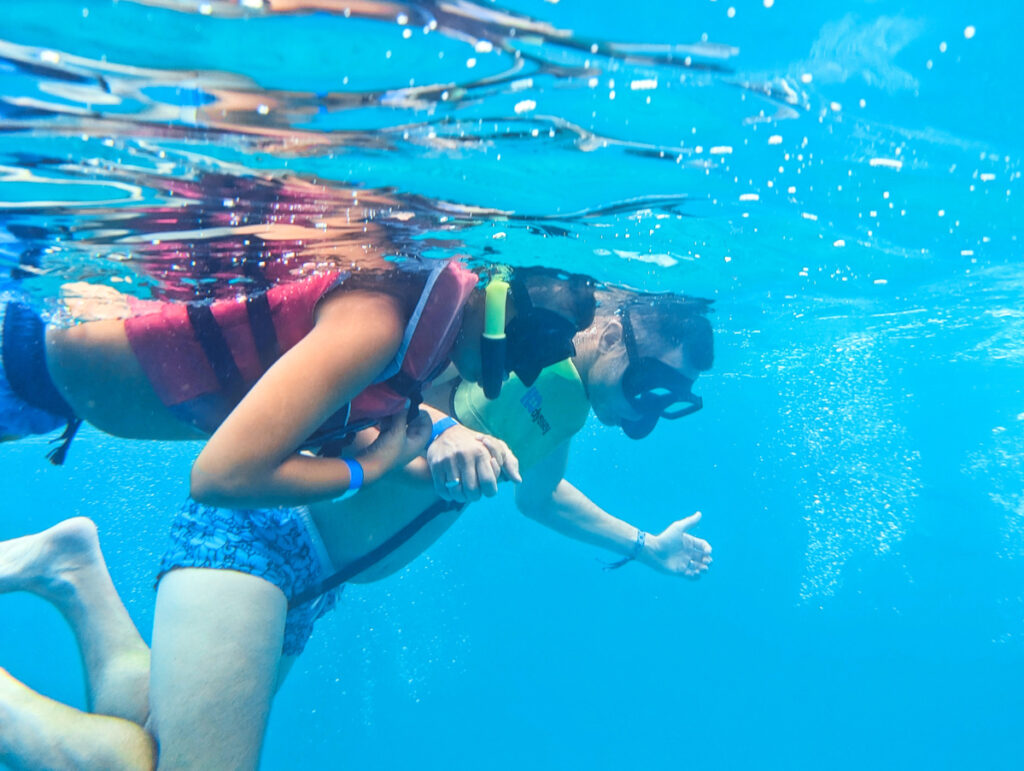
How Standard Sunblock Impacts the Ocean
I think it’s safe to say that WE ALL care about the ocean and the life within and NOBODY intentionally wants to harm it. The ocean is WHY people come visit the Florida Keys. When it comes to damaging reefs and human interaction, simply not knowing can cause great harm. Each year about 2,800,000 pounds of sunscreen enter waterways around the planet. To appreciate the importance of reef-safe sunblock, you must first understand how conventional sunscreens harm marine environments. Whether you’re having a day out snorkeling at Sombrero Reef or if you’re exploring the Key West National Wildlife Refuge on Honest Eco’s Squid catamaran, your choices will have an impact on the ocean.
Chemical Pollution
Many conventional sunscreens contain harmful chemicals such as oxybenzone and octinoxate. These substances are effective at protecting human skin from UV radiation, but they wreak havoc on marine ecosystems when introduced to the water. Studies have shown that these chemicals contribute to coral bleaching, a phenomenon where corals expel the algae (zooxanthellae) living in their tissues. Without these algae, corals lose their vibrant colors and, more importantly, their primary energy source, which can lead to their death. When you snorkel at a damaged reef it’s very evident, especially here in the Florida Keys. And that’s why reef-safe sunscreen is so important!
And it’s important when you’re just swimming at your resort or hotel pool too. Yes, I’m talking about swimming pools as well and yes, it’s important to use reef-safe sunscreen for pools too for a good reason. Just like how the chemicals can come off your body in the ocean when you’re swimming, the same thing happens in a swimming pool. The pool filter will collect those chemicals and when the filter is cleaned, the chemicals are a part of the runoff that then enters the ocean. Even swimming in a pool can have a negative impact on reefs.
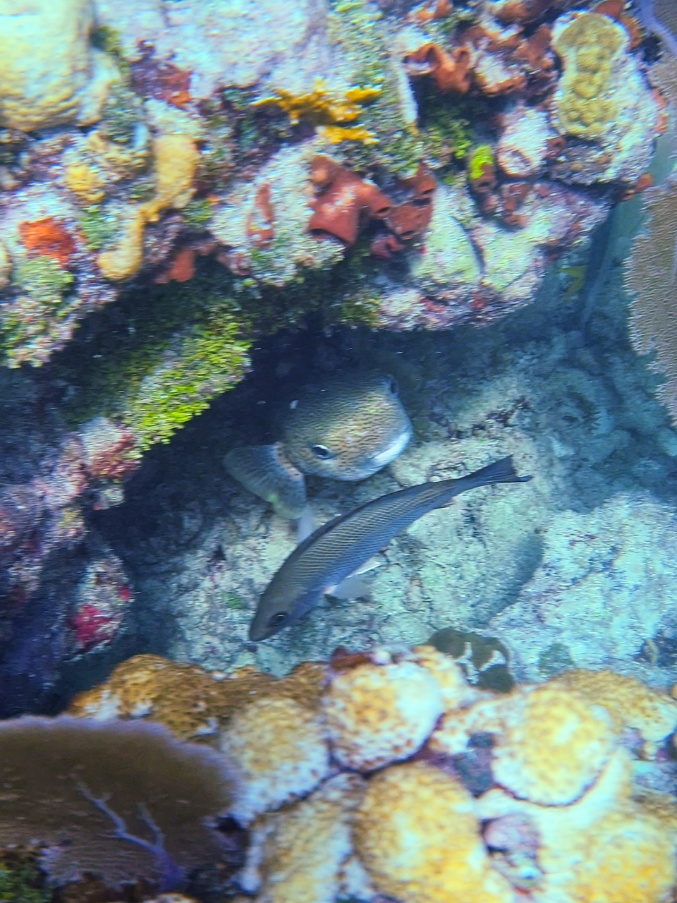
Coral Bleaching in the Keys
When oxybenzone and octinoxate interact with coral, they disrupt the coral’s reproduction and growth cycles. Research has found that oxybenzone can deform coral larvae, preventing them from developing into healthy, mature corals. Even small amounts of these chemicals can have severe effects, with some studies indicating damage at levels as low as one drop in six Olympic-sized swimming pools.
These sunscreen chemicals are not just harmful to coral; they can also accumulate in the tissues of marine life. There is so much wildlife in the Florida Keys that a small choice like normal sunblock has trickle-down effects on many creatures. Fish, sea urchins, and other marine organisms absorb these substances, which can disrupt their hormonal systems and affect reproduction. Over time, the chemicals work their way up the food chain, impacting larger predators and ultimately humans. Do you see how now the decision to use reef-safe sunscreen now impacts your own health?
The damage to coral reefs has cascading effects on the entire marine ecosystem, reaching into the sponge gardens and grassy flats of the Keys, which then can have an impact on the Everglades and beyond. Coral reefs provide habitat and food for countless species, and their destruction can lead to declines in fish populations and other marine life. This imbalance can also impact local communities that depend on fishing and tourism for their livelihoods.
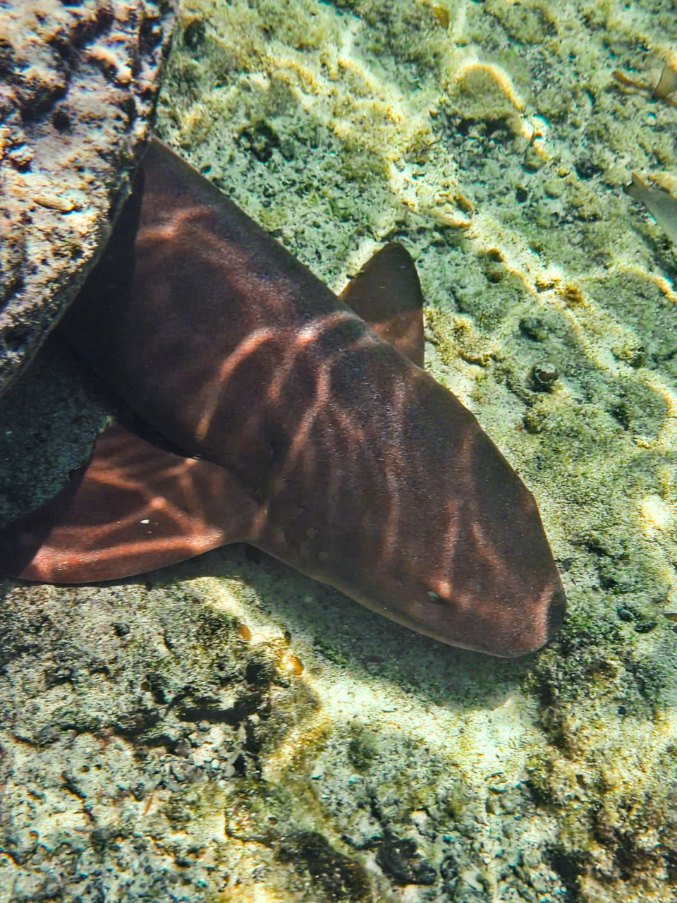
What Makes a Sunblock Reef-Safe?
Great question and I’m so glad you asked! Reef-safe sunscreens are formulated to minimize harm to marine ecosystems. Understanding the ingredients to avoid and those to look for is key to making an eco-conscious choice. Sometimes you’ll find sunscreen that’s labeled as “gentle” or “eco friendly” but before you purchase it and tell yourself that you’ve got a reef-safe sunblock make sure it actually is.
Ingredients to Avoid
So what should you look for on a label when you’re trying to find a good reef-safe sunscreen? Like I said, eco-friendly doesn’t always mean reef-safe when it comes to sunblock, so stay away from products that contain the following:
- Oxybenzone: Disrupts coral reproduction and contributes to bleaching.
- Octinoxate: Impairs coral development and increases bleaching susceptibility.
- Parabens: These preservatives can be toxic to marine life (some companies will remind you that even blueberries have parabens, but those are naturally occurring, not man-made)
- PABA (Para-Aminobenzoic Acid): Known to cause coral toxicity.
- Nano-sized Zinc Oxide or Titanium Dioxide: While non-nano versions are generally safe, nano-sized particles can be ingested by marine organisms, causing harm. This will be labeled as nano usually.
I know that this is a lot to think about and be alert for, but it’s worth it to take a small step to not cause damage if you can avoid it.
Ingredients to Look For
Look for certifications such as “Reef Safe,” “Oxybenzone-Free,” or “Hawaii Compliant” (referring to Hawaii’s sunscreen ban on harmful chemicals, which is much more specific and stronger than anywhere else in the USA). These labels can guide you toward eco-friendly products.
- Non-Nano Zinc Oxide: Provides broad-spectrum UV protection without harming marine life.
- Non-Nano Titanium Dioxide: Another mineral-based UV blocker that is considered safe for coral reefs.
- Natural Oils and Extracts: Ingredients like coconut oil or shea butter can offer moisturizing benefits without harmful effects.
- Biodegradable Formulas: Products labeled as biodegradable break down naturally in the environment, reducing their impact.
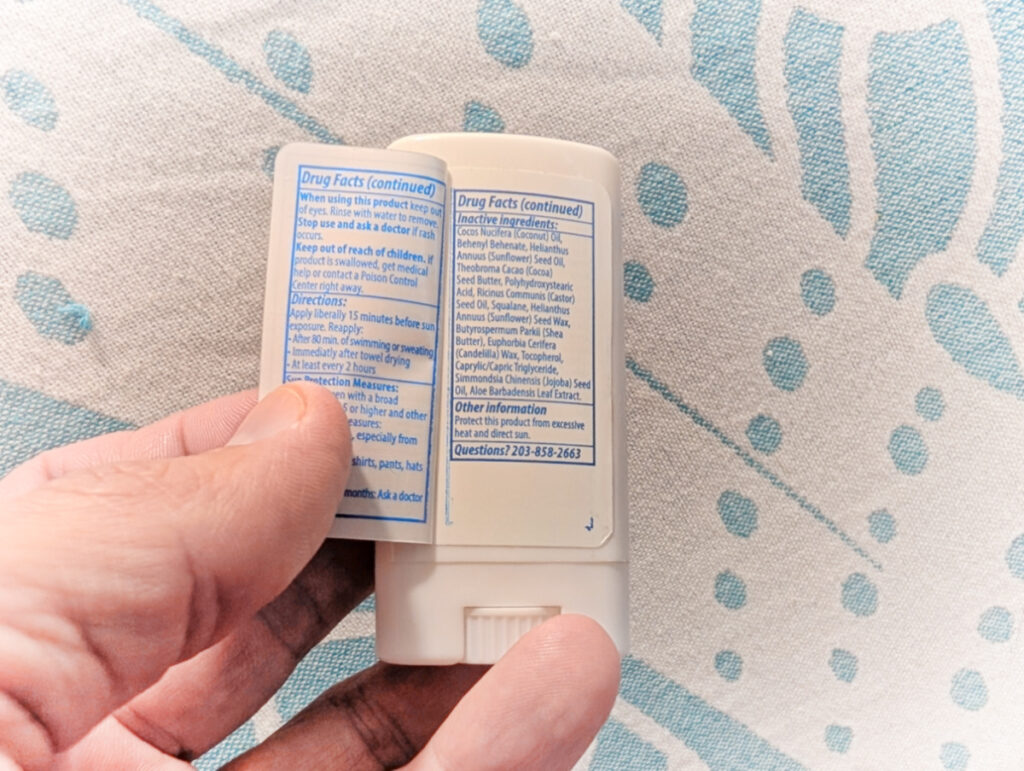
Recommendations for Reef-Safe Sunblock Products
I’m bad because I rarely use sunblock since I’m so dark skinned, but there are times when I remember that I’m not invincible. When I have to get new reef-safe sunscreen, I usually look online for whatever is following the most up-to-date guidelines, but when we’re in the Florida Keys, we know where to get the right type of sunblock. If you’re shopping in person, dive shops, snorkel tour offices and eco-conscious stores will carry at least one, usually 3-4 reef-safe sunblock products.
To help you make informed choices before you head to the Keys, consider these highly-rated reef-safe sunscreens (affiliate links included):
Key Ingredient: Non-nano zinc oxide (20%)
Benefits: Broad-spectrum protection, water-resistant
Reef-Safe Features: Uses non-nano zinc oxide, biodegradable
Key Ingredient: Non-nano zinc oxide (18.75%)
Benefits: Certified organic, hypoallergenic
Reef-Safe Features: No harmful chemicals or nano-particles
Key Ingredient: Non-nano zinc oxide
Benefits: Water-resistant, biodegradable
Reef-Safe Features: Meets stringent reef-safe standards
Key Ingredient: Non-nano zinc oxide
Benefits: Lightweight, broad-spectrum protection
Reef-Safe Features: Free from toxic and reef-damaging substances
Key Ingredients: Non-nano zinc oxide and titanium dioxide
Benefits: Dermatologist-recommended, fragrance-free
Reef-Safe Features: No oxybenzone, octinoxate, or parabens
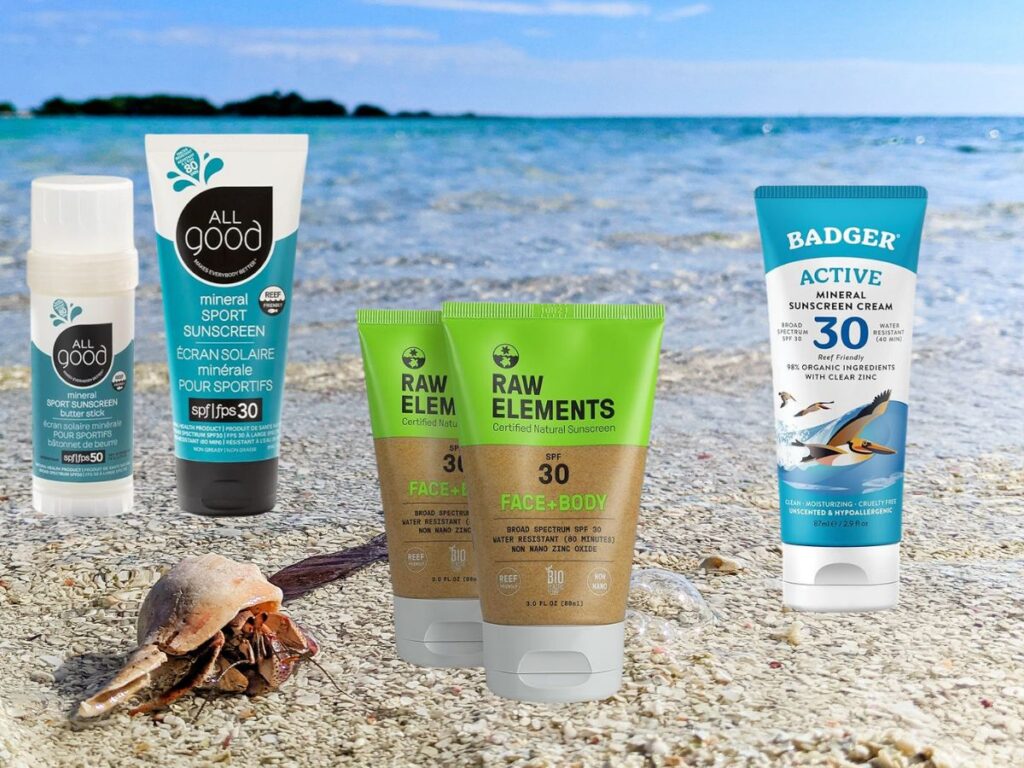
Simple Steps to Protect Coral Reefs
Switching to reef-safe sunscreen is a small but impactful step in preserving marine ecosystems and it’s very easy, although it does cost more than standard sunscreen. However, there are additional measures you can take to protect coral reefs that AREN’T chemical based and are great steps for your own sun protection and eco-consciousness anyways:
- Wear Protective Clothing: Use rash guards or long-sleeved swimwear to reduce the need for sunscreen.
- Avoid Touching Coral: Physical contact can damage coral and introduce harmful bacteria.
- Support Marine Conservation: Donate to or volunteer with organizations working to protect coral reefs.
- Educate Others: Spread awareness about the impact of sunscreen on marine life.
- Reduce Plastic Waste: Plastic pollution is another major threat to ocean health.
The choice of sunscreen might seem like a small decision, but it has far-reaching consequences for the ocean and its delicate ecosystems. We’ve talked to our kids about the importance of our switch, because they really don’t like the thickness of some of the reef-safe sunblock products and complain, but they get it. By choosing reef-safe sunscreens made with non-nano zinc oxide or titanium dioxide and free of harmful chemicals, we can enjoy the sun responsibly while protecting the natural beauty of our oceans. Together, our collective actions can make a difference in preserving these underwater wonders for generations to come.
If you have your own favorite reef-safe sunblock products or tips you want to share, we’d love to hear from you. Please leave a comment or send us a note so we can include your suggestions. Thank you for being thoughtful on behalf of marine life and happy swimming!
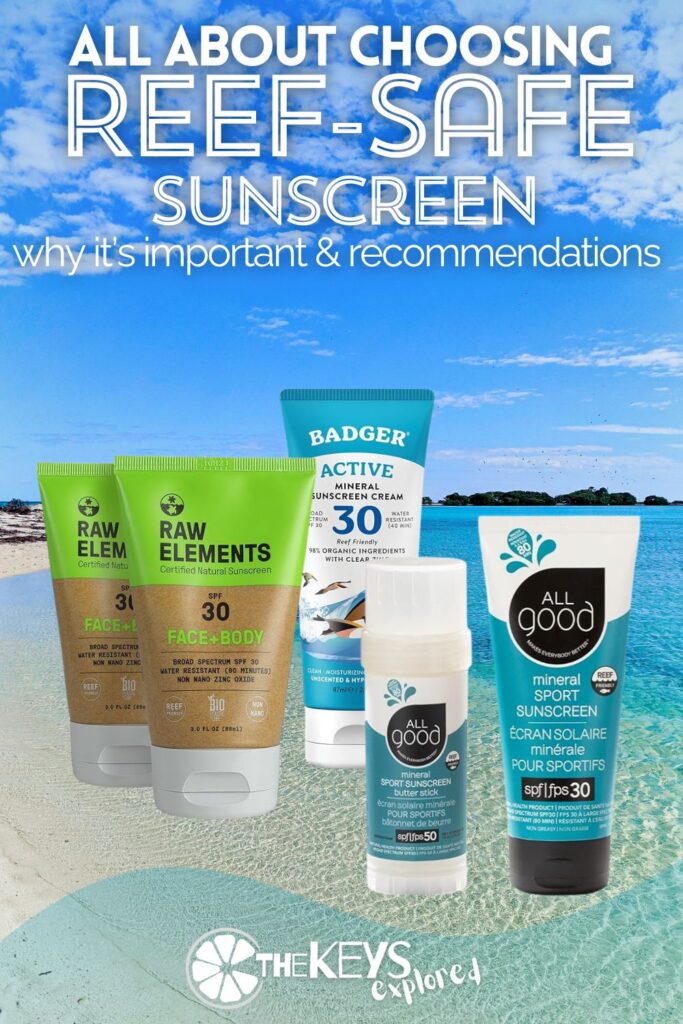
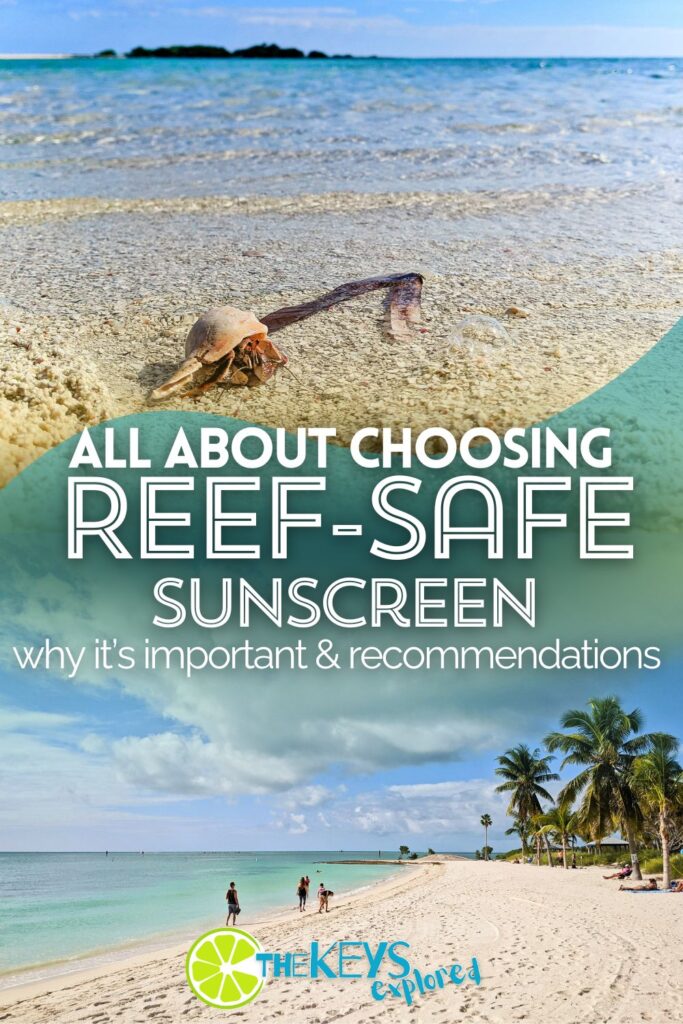



Pingback: Kayaking tour at Geiger Key: Key West Kayaking Wonderland